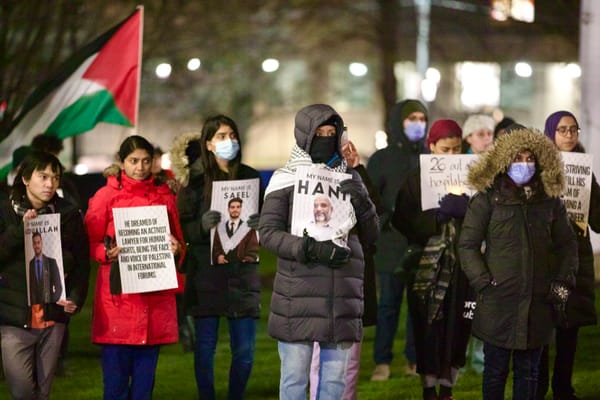Earlier this year, a trans woman in Manitoba finally won her two-year battle to get the province to pay for the cost of her facial feminization surgery (FFS). The woman, who is not identified in the Manitoba Health Appeal Board decision, will likely be the first person to have the province fund their FFS, which can cost up to $50,000.
While this is excellent news, the Board issued a very narrow ruling. The province’s initial ruling, the Board said, “erred in not considering her individual case rather than relying on a blanket position that facial feminization surgery is not medically required.” The Board added that Manitoba Health “ought to take the time to consider each such proposed surgery on a case by case basis.” In other words, this specific instance of FFS will be covered, but any other trans person who needs it to help deal with gender dysphoria still must apply for funding individually.
Gender dysphoria is defined by the World Professional Association for Transgender Health (WPATH) as “discomfort or distress that is caused by a difference or differences between a person’s gender identity and that person’s sex assigned at birth (and the associated gender role and/or primary and secondary sex characteristics).” The document also notes, “Only some gender nonconforming people experience gender dysphoria at some point in their lives.”
While there’s a worthwhile discussion to be had over whether gender dysphoria is an outdated framework, and if trans healthcare should instead be focused on gender euphoria (i.e., the positive feelings caused by experiencing gender affirmation), Canada still generally focuses on reducing dysphoria.
Dysphoria can have many different causes, and varies from person to person, but medical literature overwhelmingly supports the notion that trans-affirming treatments lead to better health and wellbeing. Conversely, leaving dysphoria untreated can cause depression, anxiety, low self esteem and suicidal ideation. When trans people refer to seemingly cosmetic procedures as life-saving, it’s because being perceived as the correct gender — whether personally or by society — hugely improves their quality of life.
The Board recognizes that “there is no one size fits all diagnosis or treatment” for gender dysphoria, but this seems to contradict their narrow ruling. If that is truly the case, why not publicly fund all trans healthcare and allow people to just choose the treatments that work best for them?
Yet that’s not how trans healthcare works in Canada. The only consistency is inconsistency, and one of the biggest inconsistencies is geographic.
The Postal Code Lottery
Some forms of healthcare for trans, non-binary, Two-Spirit and gender non-conforming are far more widely funded than others. Generally, hormones and the major gender confirmation surgeries are covered. That means if someone’s dysphoria can’t be easily resolved by these methods, they’re probably going to be paying out of pocket.
Take hair removal, for instance. For many trans feminine people, facial or body hair is a major source of dysphoria. And yet, a 2020 report found that Manitoba was the only province to cover hair removal (that it deems “medically necessary”), which can be incredibly costly and time-consuming, amounting to thousands of dollars over the course of several years. If hair removal lessens dysphoria, and treating dysphoria is the point of trans healthcare, then why do patients have to pay out of pocket?
Even procedures that are typically funded can vary across the country. Take top surgery for trans masculine people, which typically involves surgeons removing breast tissue, and some kind of contouring or strategic scar positioning to achieve a more “masculine” flat chest. In Ontario, only the mastectomy portion is covered by provincial funding. As it’s normally not possible to only get the mastectomy, patients end up being billed an extra fee — one person said they were charged around $3,000 — for a surgery that is entirely covered in most other provinces.
And that’s before you get into the practicalities of accessing trans healthcare. Canada is very large and trans people make up an estimated 0.35 per cent of the population according to the 2019 Census Test (with clearer numbers to come from the 2021 census). So, it can be a struggle to find healthcare providers with the appropriate knowledge.
Moreover, family doctors are allowed to prescribe hormones, but they may be unwilling to do so. One 2018 study in Ontario found around half of respondents didn’t feel comfortable discussing trans health issues with their family doctor, and more than a third had experienced medical transphobia. Some people report being denied completely unrelated healthcare just due to being trans.
Meanwhile, waitlists for top surgery in Alberta can be up to three years long. Surgery, especially, has a number of locational barriers. The only clinics for trans feminine people seeking gender affirming lower surgery, for example, are in Montreal and Vancouver. Travel and accommodation costs, as well as time taken off work, mean that people living outside of these areas will have more practical concerns that can prevent them from accessing this care.
Trans healthcare is not unique in how different provinces cover varying procedures, but these discrepancies are more noticeable because of how small trans people are as a group, and how specific their health needs are. While not all trans people medically transition, many do, so provincial differences in hormone access, surgery waitlists, medical gatekeeping or funding add up over a lifetime.
One example of this is Ontario’s requirement that a patient must have been diagnosed with gender dysphoria, been on hormones for a year and have had two medical assessments recommending gender confirming surgery before the province will pay for it. British Columbia, by contrast, has an informed consent model: so long as a patient has a surgical readiness assessment, there’s no mandatory dysphoria diagnosis or hormone regime.
Standardizing Trans Healthcare
There is, of course, a solution to the disparity in trans healthcare. As I’ve previously suggested, the federal government could categorize all trans-related healthcare costs as mandatory, meaning provinces who do not comply would be financially penalized.
However, we probably won’t reach this ideal position, given the Liberal government’s continued apathy toward LGBTQ2S+ communities. So instead, each province will likely have to individually legislate to expand their healthcare coverage.
Ontario may be headed down that path, as MPP Suze Morrison is tabling a bill this week to establish an advisory committee on gender-affirming care, with the eventual aim of broadening the province’s coverage.
Currently, Yukon leads the way in trans healthcare funding. Earlier this year, the territory introduced a policy to cover not just hormones and major surgery, but also procedures such as FFS, voice training, hair removal, and body contouring, putting it more in line with the international best practices of care as set out by WPATH.
While the government did consult with physicians who specialize in trans care before introducing this policy, trans Yukoners reported being “shocked and pleasantly surprised” when it was announced. Politicians seemed to change it because they genuinely thought it was a good thing to do. Provinces should use Yukon as a model for how trans healthcare can and should be funded, though the political mechanics of how they reach that point are open to variance.
So, although Manitoba funding FFS for one person is a small victory, it’s time for bigger ones. Trans people shouldn’t be paying wildly different amounts for necessary medical procedures just because of where they live.








Member discussion